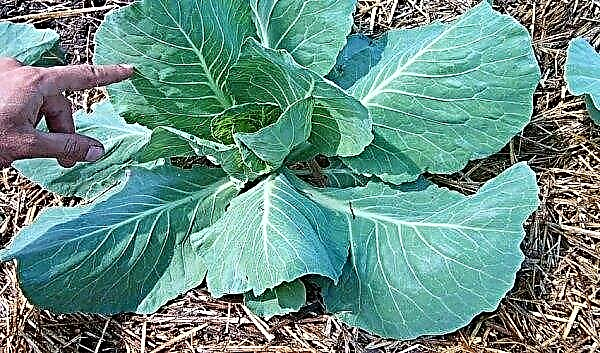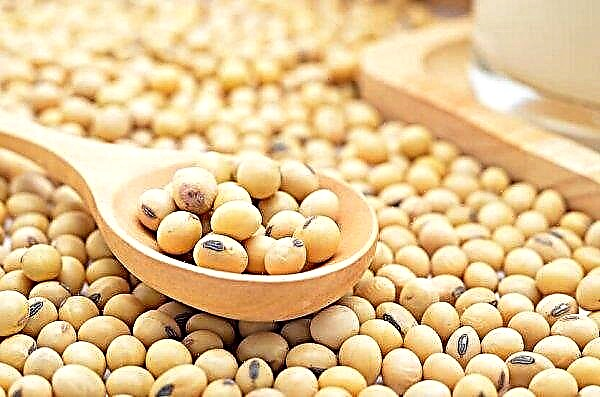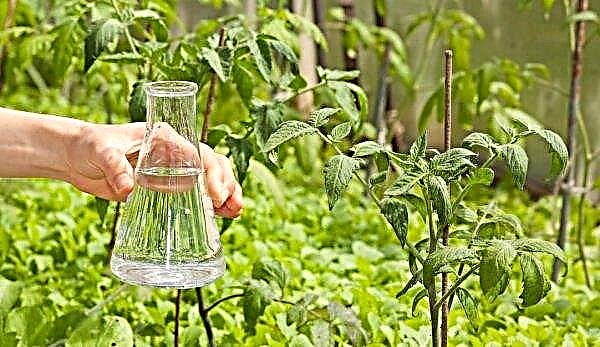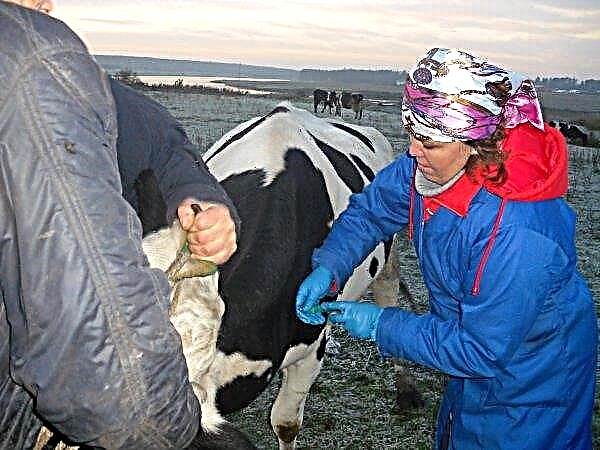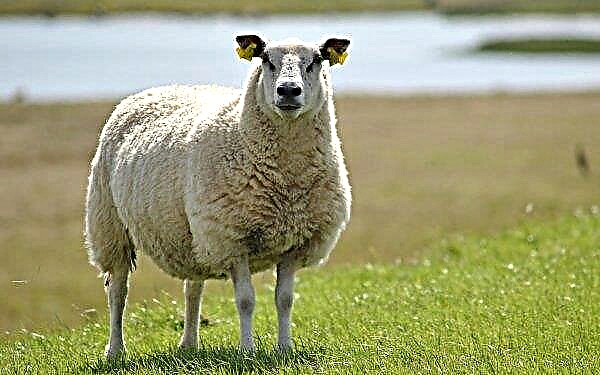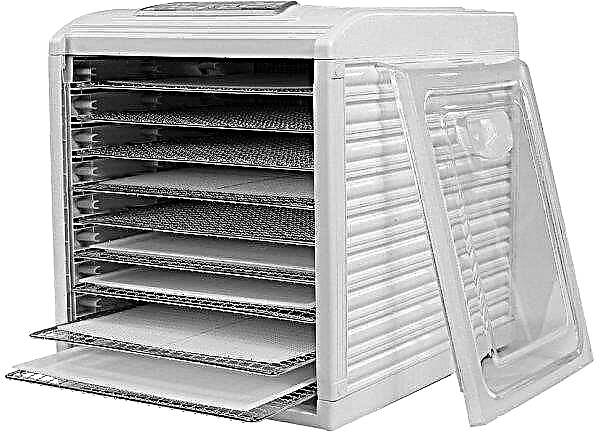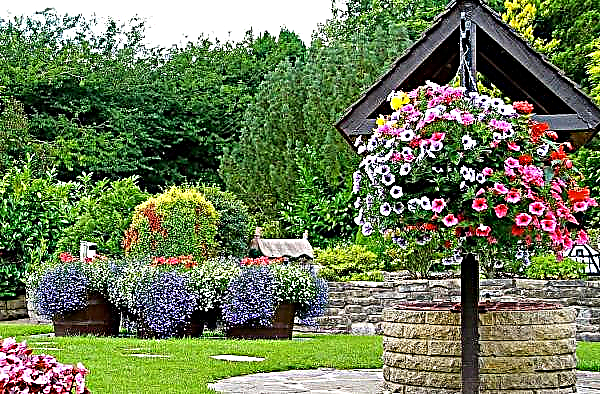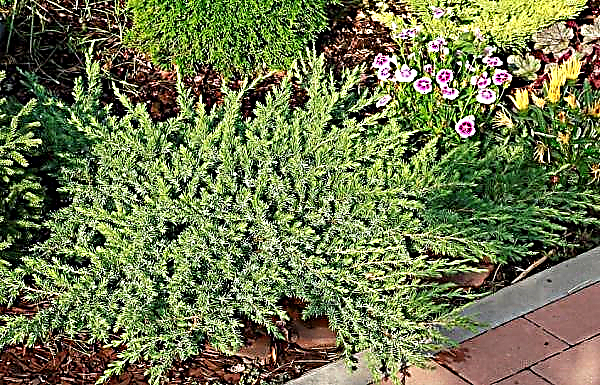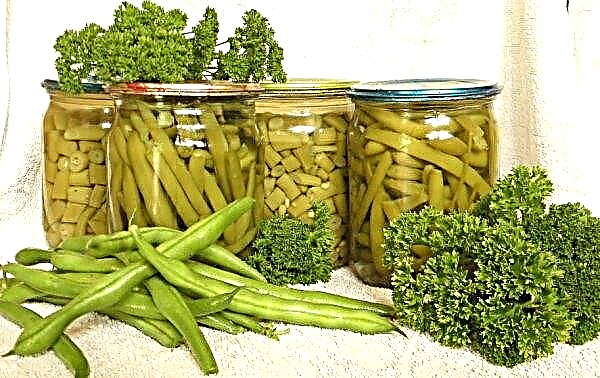Potatoes love moisture - during the growing season, he acquires not only a lush green bush, but also many tubers, and for this he needs a lot of water, which he receives from the top layer of soil. The correct irrigation scheme in this case is very important, since both shortage and excess moisture lead to the loss of a significant part of the crop.
Do I need to water potatoes
Opinions of summer residents often do not coincide. Someone claims that he is growing a culture without additional moisture, someone is watering on schedule. The truth is that watering is necessary in any case, but its intensity and frequency depend on the soil.
Heavy chernozem or loamy soils with a dense structure, after heavy rainfall, can retain moisture for a long time - in this case, watering is not necessary. If sandy soil is reserved for potatoes, and there was little rain, then it is necessary for the entire growing season.Did you know? It is known that when reacting with iodine, potatoes turn blue. However there is a variety whose peel and flesh are initially blue. It is called Linzer Blaue.
How many times and how often to water
There is no single recommendation. Irrigation time depends on the type of soil, its density, temperature and humidity, etc. Before the tubers begin to form, the soil moisture level is maintained within 70%, after - within 80%.

During the growing season, spring potatoes are watered 4 times with a water flow rate of 40 l / m², summer potatoes - 6 times with the same flow rate. In hot weather, watering is carried out in the evening, and if it is cool at night, it is better to transfer it to the morning hours.
It is very important to observe the potatoes, periodically assessing the condition of the stems, leaves and shoots in order to notice in time signs of lack or excess of water. This will help prevent slow growth of the bushes and crop loss.
What should be the water
One of the most important rules for moisturizing potatoes is that the water should be warm. The solanaceous family has traditionally thin, delicate roots that rot easily when in constant contact with cold water. It is best if the water warms up in an open tank in the sun during the day before watering.
Basic watering rules
It doesn’t matter which method of water delivery to the site you choose. There are basic rules for saturating potatoes with moisture:
There are basic rules for saturating potatoes with moisture:
- Watering is carried out only with warm and well-defended water so that the roots do not rot.
- The procedure is carried out not in the heat, but in the evening, so that the daytime sun does not nullify your work, and drops of water do not work like lenses, burning the surface of the leaves.
- The intensity depends on the type of soil: lightly watered a little, but often; heavy watered less often, but with the gradual absorption of water.
- After the irrigation procedure or after rain, the earth around the bushes must be carefully loosened, saturated with oxygen.
If all the conditions are met, then you are watering the beds correctly.
Watering Methods
There are several basic irrigation methods, both manual and fully mechanized. Their brief characteristics, advantages and disadvantages are discussed below.
Important! During the period of budding and tuber growth, it is important to regularly monitor soil moisture. It is at this stage that there is a risk of losing over half of the entire crop!
Under the root
The most effective of manual methods of watering. Using a watering can, bucket or other convenient container, you water each potato bush individually. The volume of water in this case is about 4 liters of water per bush.
This option is good if there is a small garden, watering which does not result in standing for many hours in a bent form over the potato bushes. But even in this case, the method is very time-consuming.
Along the furrows
Surface irrigation can also be done using furrows. This method is great for those who have a simple country garden in an uneven area. To make ridges, take a hoe or a hoe, and then manually cut the furrows in increments of 70 cm, while forming earthen ridges along the edges.
Then, in the same way, create transverse grooves with a step already in 5-6 m. Every second ridge is cut from both sides so that water can circulate. The remaining ridges are leveled, the furrows are compacted. The area thus designed allows water to circulate better and more efficiently nourish the soil.
The far edge of the rows is closed, and then water is poured into the furrows with a hose. In a few days it will be necessary to loosen the soil and rake up the earthen heaps where they were washed away. The first time this procedure is carried out after the first hilling, the second - after flowering.
Important! If the plot has a slope, then the hose can simply be laid in the groove, and the water will drain to the end of the row itself.
Irrigation
If there is a well in your area, you can install a pump and hose the garden. A medium-pressure water jet is directed in turn to each row of potato planting. Rows pass several times. This method is not the most convenient, the hose is constantly in clods of wet earth and it must be shifted all the time. In addition, there is a risk of injury to the stems.
By irrigating potato beds with a hose, you partially save time, but you spend a lot of water. In addition, from strong moisture on the soil, crusts are formed that require additional loosening, as well as salt deposits.
Video: watering potatoes by irrigation
Sprinkling
Since pumps have ceased to be an expensive pleasure, many garden owners have become interested in mechanized irrigation methods. One of the most effective is sprinkling - the supply of moisture to large areas with the help of sprayers.
- The benefits are obvious:
- mechanization of work;
- the ability to adjust the intensity and frequency of humidification;
- embossed areas do not cause problems;
- no need to create irrigation furrows;
- You can combine watering with top dressing.
Did you know? During the Gold Rush, Alaska's pioneers valued potatoes above gold because it was able to fight scurvy.
- But even this wonderful way has disadvantages:
- have to spend a lot of money on materials for the system;
- high power consumption;
- depending on the soil, the result may not be the one you were counting on: heavy soil may not let water through and keep moisture on the surface in puddles;
- if the area is arid, moisture may not reach the required depth.
Drip irrigation
This method allows you to feed water directly under the roots of potato bushes and is strictly dosed (drop by drop, hence the name). Immediately make a reservation that all the disadvantages of drip irrigation rest on financial costs.
Equipment must be purchased and installed, and serviced and repaired as necessary. All this, coupled with the cost of water and electricity, is a considerable amount that not everyone can afford.
But the pros, if you grow potatoes professionally, may outweigh the disadvantages:
- watering can be adjusted by setting the timer response time and the necessary parameters;
- there is no need to go to the cottage 2-3 times a week to water the garden - everything is automated;
- The schedule is strictly observed.
Dry watering
This is the name of the method in which the time of moistening is stretched over time using an additional procedure - mulching and hilling of the soil around the plantings of the vegetable. Mulching the bushes with green manure, aged sawdust or other organic substances allows you to retain moisture in the soil, which is especially true for heavy soils.
With the advent of hot weather, a layer of mulch helps keep the roots of the plant cool and moisturizes them with condensate from the air. Over time, organic matter preters and becomes a natural fertilizer for potatoes.
The basic rules of dry watering:
- immediately after the first wetting, the first hilling is also carried out by completely digging in 10-centimeter bushes;
- before flowering, only 4 hills are necessary;
- as soon as flowering is completed, it is necessary to loosen the ground between the rows of planting.
The dry method is most effective in regions with a humid climate.
Features of watering
When planning this event, it is necessary to take into account the ambient temperature and humidity. In hot weather, watering should become more intense: if this is not a period of budding, then the usual frequency of watering is up to 6 times a month. In cool weather, 2-3 times a month is enough.
Important! For more effective soil moisture, do not forget about loosening and mulching.
During landing
It is better not to water seed potatoes during the planting period: there is a risk that the tubers will rot, not even having time to take root. At this stage, soil moisture will be sufficient.
In the period from planting to the first shoots, the formation and development of the root system occurs. Watering is not needed at this time.
During flowering
As soon as 10 cm long seedlings appear above the ground, it's time to start watering the potatoes. While it is blooming, the amount and intensity of watering are increasing. If there is no rain, then for each bush there are about 5 liters of water with a frequency of 2-3 times a week.

After flowering
After the flowers have fallen, enough watering 1 time per week in the amount of 4 liters per bush. The next stage of intensive soil moistening is the filling of tubers.
After cutting the tops
Trimming tops after flowering is a foreign method, now successfully applied by our farmers. This procedure saves potatoes from degeneration and allows you to harvest a good crop, healthy and not watery. Late varieties are cut by 15 cm, early varieties by 10 cm, before harvesting (two weeks). At the same time, you can stop watering.
When to stop watering potatoes
The saturation with moisture is stopped when the time for harvesting is suitable. The last watering is done in 7-10 days. In a temperate climate and light soil, the irrigation rate per season is approximately 10-15 liters per bush.
Signs of improper watering
Both surplus and lack of water can seriously damage the potato crop.
Signs of lack of moisture:
- fading leaves, sometimes they become light;
- shoots slowing down their growth;
- not opening inflorescences for a long time;
- drying out of shoots.
Signs of excess moisture:
- drooping leaves becoming darker;
- weeping spots on the stems, sometimes they become covered with fungal plaque;
- rotting of tubers.
Despite the popularity of potatoes, growing it is very difficult. This is a whimsical culture, which must constantly create optimal conditions, starting with the selection of the right soil and ending with a watering schedule. A mechanized irrigation system is not cheap, and it is difficult to say in advance whether it will pay off, a manual one has many shortcomings. But nothing is impossible, and your efforts will certainly delight you with a tasty and healthy result.Did you know? In the rainforests you can find a real potato tree. Alas, the evergreen gives poisonous fruits that are not suitable for food.

